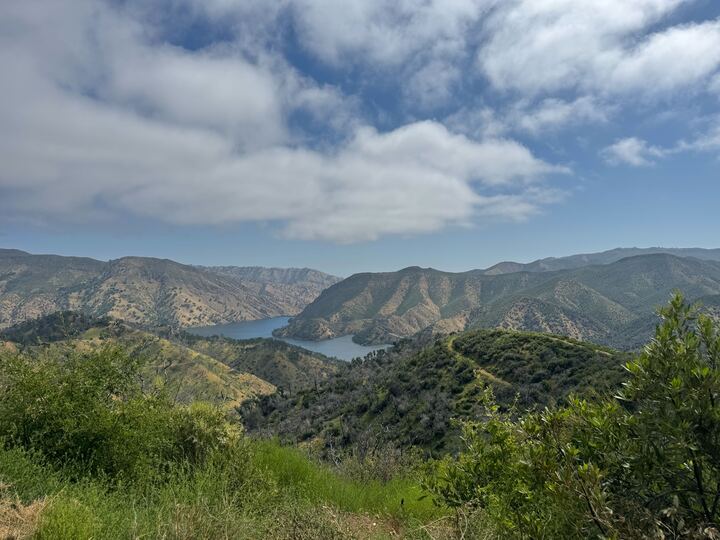ABI 198 Section B - First day of class!
We had a successful first day of class! Today was mostly spent discussing course logistics and planning for the quarter. The presentation slides from today's class are in the Miscellaneous folder in the Google Drive. Here were our meeting minutes:
| Time | Activity | Duration |
| 10:00 AM | Introduction + Goals | 15 min |
| 10:15 AM | Slack Signup | 10 min |
| 10:25 AM | Description of Roles + Organization | 15 min |
| 10:40 AM | Google Drive Signup | 5 min |
| 10:45 AM | MC/Blogger Signup | 10 min |
| 10:55 AM | Blog Signup | 10 min |
| 11:05 AM | Name Chain w/ Hobby | 20 min |
| 11:25 AM | Lunch / Walk | 30 min |
| 11:55 AM | Constraints + Resources | 10 min |
| 12:05 PM | Google Earth Tour | 15 min |
| 12:20 PM | Down to Lab (069 Briggs) – Equipment Exploration | 20–30 min |
| 12:50 PM | Zotero Signup | 10 min |
| 1:00 PM | Reading as a Part of Research | 10 min |
| 1:10 PM | SMART Goals + Action Plans | 10 min |
| 1:20 PM | Progress Tracking – Self + Collective | 10 min |
| 1:30 PM | Crystal – Homework Description + Prepare for Friday | 10 min |
Everyone in the class should be signed up and able to access the course's digital infrastructure which includes:
- The class Google Drive
- Slack server (installing Slack on your phone and turning on notifications is highly recommended)
- Blogger website
- Zotero shared folder
- Time (the quarter is only 10 weeks!)
- $1000 to purchase supplies we are not able to obtain from Marshall's equipment collection or from (nicely) asking others on campus
- Location must be near Davis
- Complying with IACUC for vertebrate manipulations
- Must be a collaborative ecological experiment
ABI 198 Field Notes (this blog)
We will rely on this course blog to both remember what we have done, and plan what we will do. Each meeting, two class members will sign up for roles 1) The MC – runs the meeting, keeps the class on task 2) The Blogger – write down what has been done during a meeting, and write the agenda for the next meeting. The blogger will implement their agenda as the MC in the next meeting. Please refer to the sign-up sheet in the Drive to see what dates you are signed up for.
On notebooks: almost all scientists have one, and keep them on their person. Most importantly the notebooks serve as a repository for ideas. They don’t need to be neat, but knowing where you wrote down an idea can be invaluable weeks or months later.
A break from the logistics
The often messy process of science
 |
| Credit: https://undsci.berkeley.edu/science-flowchart/ |
But where are the ants going? Why are trees green? Do ladybugs have friends? Why do spiders have to eat other animals and not plants?
"But I am very poorly today & very stupid & hate everybody & everything. One lives only to make blunders."
This process can feel scary, but you will get through it! You have the support of your classmates, along with Crystal and Marshall to help you. Don't hesitate to rely on your scientific community for support. Ideally, this course should be a fun experience where you learn important skills.
Our next class meeting
Our first R homework will also be due next Monday. Please submit your R homework in the Google Drive.
Update with agenda:
12:35 - self-guided observations; 10 minutes on plants, 10 minutes on invertebrates and 10 minutes on vertebrates. General observations and exploration remaining time.
1:15 - reconvene and group discussion
How do the readings impact your observations? Do any potential study questions come to mind? How are these different organismal groups interconnected?
1:45 - Depart Putah Creek
Observation Activities and Questions
Plant community observations:
How many tree and shrub species do you count? Collect a leaf from each species that has leafed out. Do you think any of these species are invasive?How do you think seasonality is affecting plants right now? What life stage are they in? How might this change over the quarter?
Invertebrate community observations
Spend 10 minutes observing the invert community. Either choose a group/individual to observe or see how many different types of inverts you can spot. Where did you see the most inverts, the fewest?Vertebrate community observations
Lastly, observe the vertebrate community. Which types of vertebrate groups did you observe? What are some challenges with observing vertebrates?Discussion Questions
How did the readings impact your observations? How are these different groups of organisms interconnected?What general patterns did you observe in the riparian area? Do any potential study questions come to mind? What was your favorite type of organism to observe?






Comments
Post a Comment